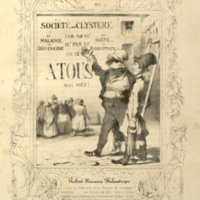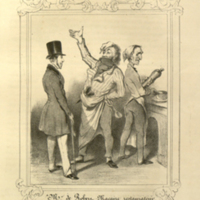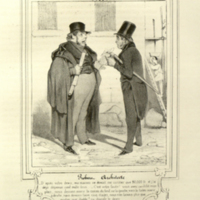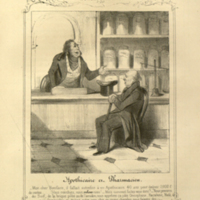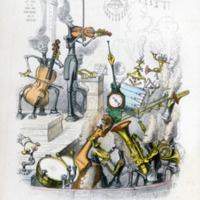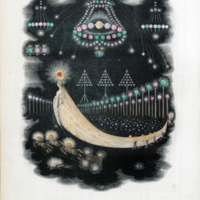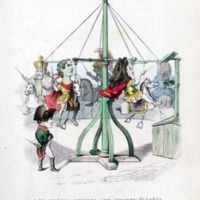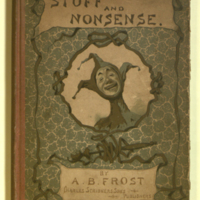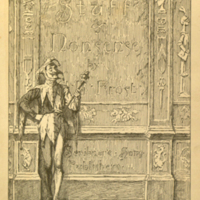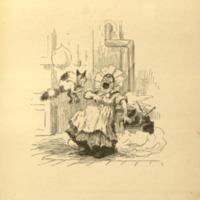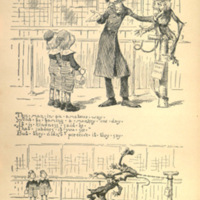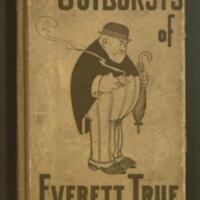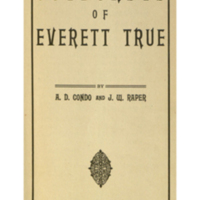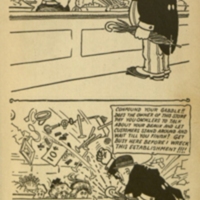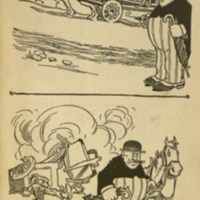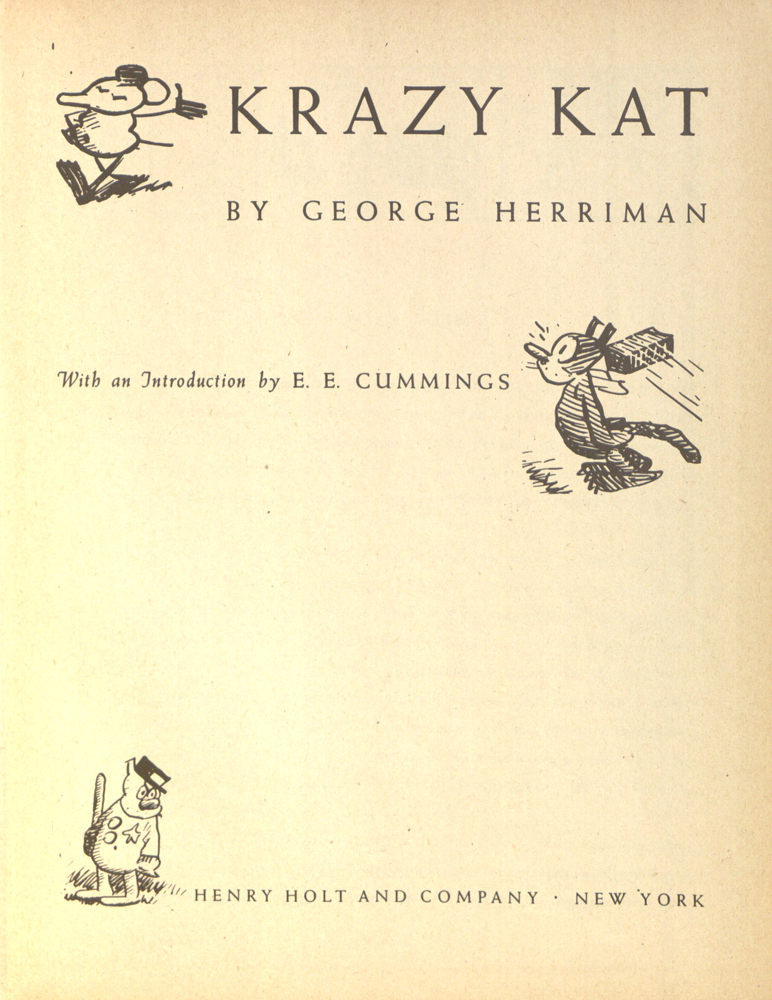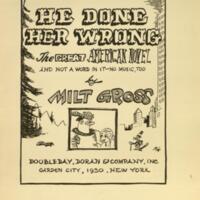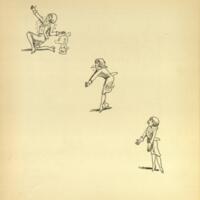Alley Oop
Comics Before Alley Oop
Where and when this art form began depends on who is talking and what words they are using. Comics, comix, comic strips, comic books, graphic novels, sequential art, and cartoons all have similar, overlapping meanings and yet are distinct terms. Some historians credit cave paintings as the earliest forms of comics, and trace their history through Egyptian hieroglyphics, the Bayeux Tapestry, block-books in fifteenth-century Europe, caricature and political cartoons, up to today's graphic novels and manga. Displayed here are some significant British, French, and American artists who helped to shape the art form in the hundred years or so before Alley Oop.
Honoré Daumier
One of the pioneers of social naturalism, Daumier was clearly ahead of his time. As a caricaturist for various French periodicals, he did not meet with any real financial success until 1878, when the art dealer Durand-Ruel mounted an exhibition of the artist's various works. Since then, he has come to be regarded as "the Michelangelo of caricature."
The Robert-Macaire series is based on a widely popular stage character of the time. Daumier portrayed him in all kinds of professions that preyed on people and their pocketbooks. In this image, Macaire is playing a philanthropist," trying to sell a potential customer a new get-rich quick scheme playing the stock market.
J.J. Grandville
Grandville was a French illustrator, who created caricatures for the French periodicals La Caricature and Le Charivari. Due to strict censorship laws enacted in 1835, he spent his later life mostly producing illustrated books. Many of his works depict human-animal hybrids and comment on contemporary social and political issues. He was a significant influence on Sir John Tenniel in his drawings for Lewis Carroll's Alice books. Un Autre Monde is one of his more surreal and disturbing works, created after a series of personal tragedies.
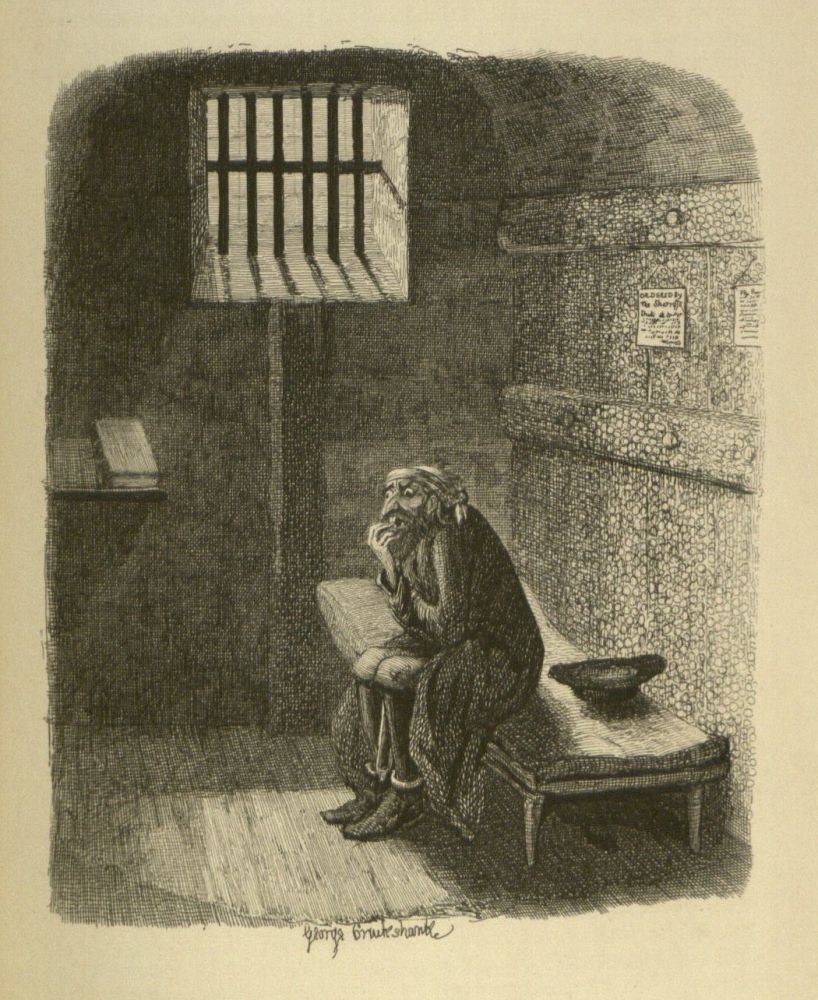
George Cruikshank, Illustrator.
Charles Dickens.
The adventures of Oliver Twist.
London: Bradbury & Evans, 1846.
George Cruikshank
Cruikshank was one of England's most popular caricaturists, and came from a family of artists. He drew political and social caricatures for numerous British periodical publications, but became known internationally for his book illustrations.
Arguably one of the most famous images from all of Dickens' novels, Cruikshank's illustration of Fagin in his jail cell is a haunting masterpiece. Dickens was known for working very closely with his illustrators and even collaborating with them on plot and character development.
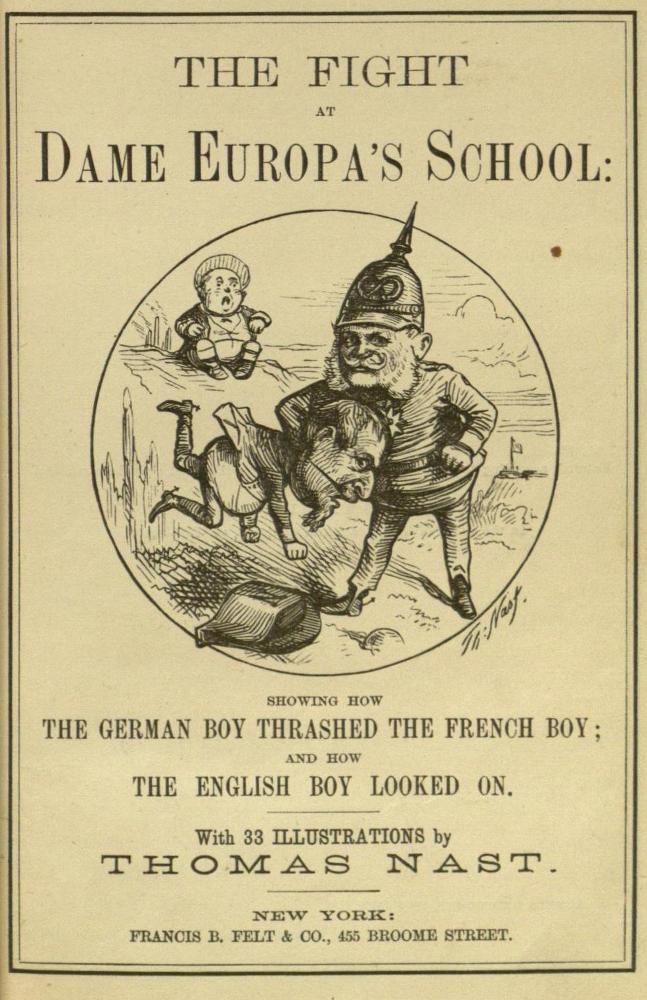
Thomas Nast, Illustrator.
H. W. Pullen.
The fight at Dame Europa's school.
New York: F. B. Felt & co. [1871].
Thomas Nast
Nast began drawing for New York periodicals at age fifteen, and quickly became a popular illustrator. Perhaps the first great American political cartoonist, he had an enormous influence on public opinion, and played a significant role in both the American Civil War and the ousting of New York politician William "Boss" Tweed. Dame Europa, his first book, is a humorous allegorical telling of the Franco-Prussian war. All of the major European players are depicted as unruly students in an elementary school.
A.B. Frost
A.B. Frost worked in the 1870s as the front page cartoonist for New York Graphic, America's first illustrated daily. He produced single panels, strips, and painted illustrations for various periodicals. He is most well-known as the illustrator of Joel Chandler Harris' Uncle Remus books. Stuff and Nonsense is a collection of his work from the periodical press.
Sir John Tenniel
Tenniel was the principal cartoonist for Punch for the second half of the nineteenth century, and produced over 2,000 full-page illustrations for the publication. He is best-known for his illustrations for Lewis Carroll's books Alice's Adventures in Wonderland and Through the Looking-Glass.
"Dropping the pilot" is arguably Tenniel's most well-known illustration from Punch, and depicts Chancellor Otto von Bismarck's forced resignation by German Emperor Wilhelm II as a pilot leaving a ship.
A.D. Condo and J.W. Raper
This is the first collection of Condo and Raper's popular two-panel gag strip "The Outburst of Everett True," which ran from 1905 to 1927. In 1916, the strip was made into a short silent film, entitled Everett True Break into the Movies. V.T. Hamlin has called this one of his favorite comic strips.
George Herriman
Herriman is best known for his comic strip Krazy Kat, which ran from 1913 until the artist's death in 1944. It is widely regarded as one of the greatest comic strips of all time. Its stark, surreal qualities prompted comparisons to artists such as Joan Miró and gained it fans like e.e. cummings, who wrote the introduction to this book printed two years after Herriman's death. Currently, independent comics publisher Fantagraphics is reissuing all of the Krazy Kat Sunday strips in large-format volumes designed by artist Chris Ware.
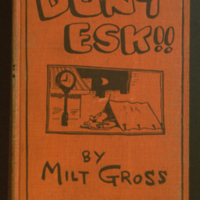
Milt Gross.
Dunt Esk!
New York, George H. Doran company [c1927].
©1926 and 1927, Press Publishing Company (New York World).
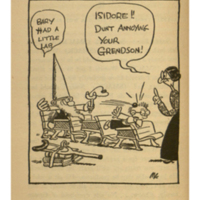
Milt Gross.
Dunt Esk!
New York, George H. Doran company [c1927].
©1926 and 1927, Press Publishing Company (New York World).
Milt Gross
Gross was a columnist and illustrator for a number of New York periodicals, including Hearst's Evening Journal, the New York Evening World, and Sunday World. Often, he used his Bronx Jewish background to comedic effect, employing a Yiddish dialect as he does in Dunt Esk!
Considered to be Gross's masterpiece, He Done Her Wrong imitates the humor and style of many silent films of the time. The entire story is told in pen-and-ink drawings, without words, and demonstrates an imaginative use of mise en-page.
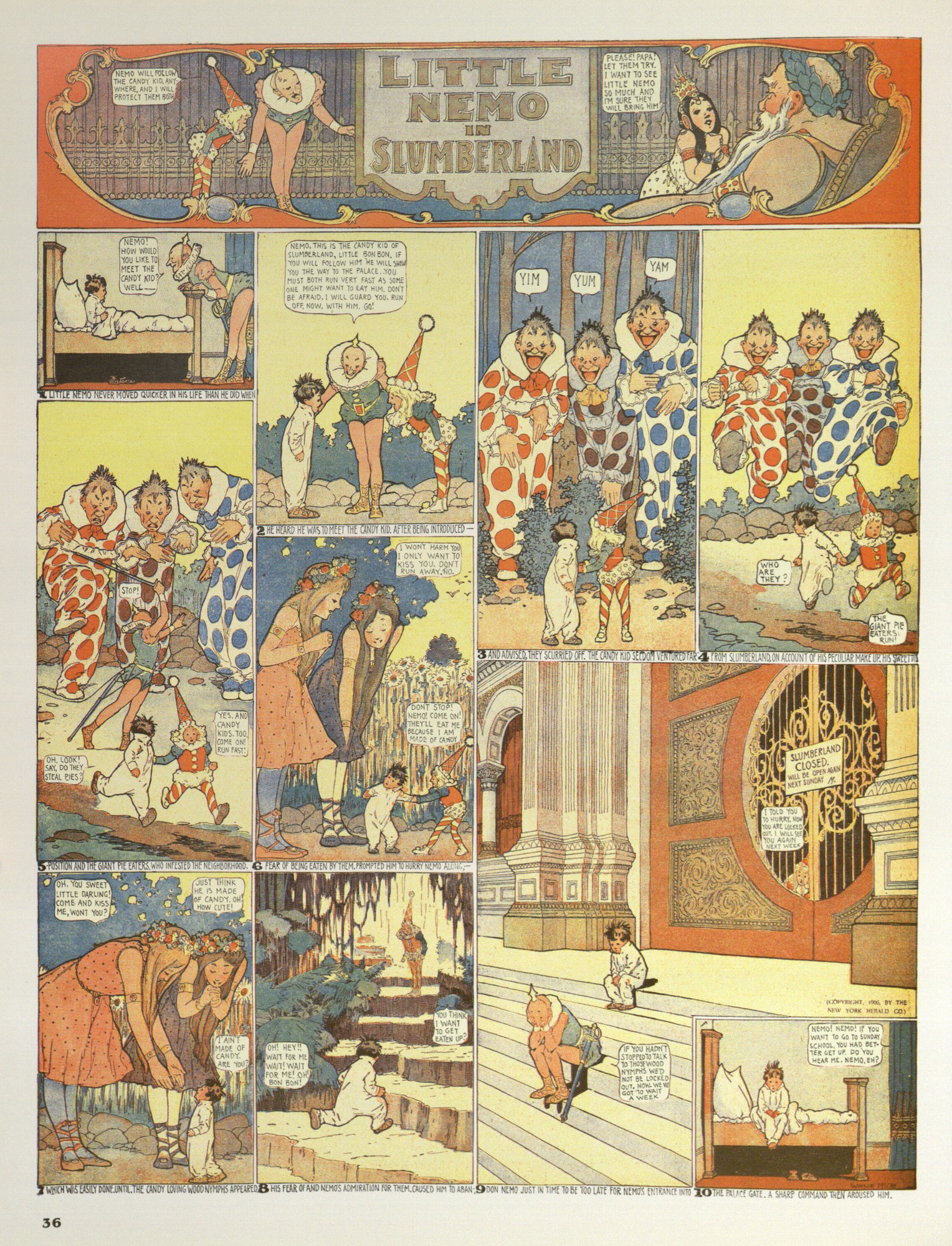
Winsor McCay.
The Complete Little Nemo in Slumberland, v. 1-6.
Westlake Village, CA: Fantagraphics Books, 1989.
©1989, Remco Worldservice Books.
Winsor McCay
Winsor McCay was a pioneer of both the comic strip and animation. His Little Nemo is a full-page Sunday strip he drew for the New York Herald from 1905-1914 and 1924-1926, which documents the dream world of a young boy. Though it only appeared in one newspaper, it was wildly popular. It has been reprinted many times, was one of the first animated strips, was made into a Broadway musical, and was even turned into a video game. Artists Chuck Jones, Maurice Sendak, and V.T. Hamlin have all cited McCay as a major influence.
